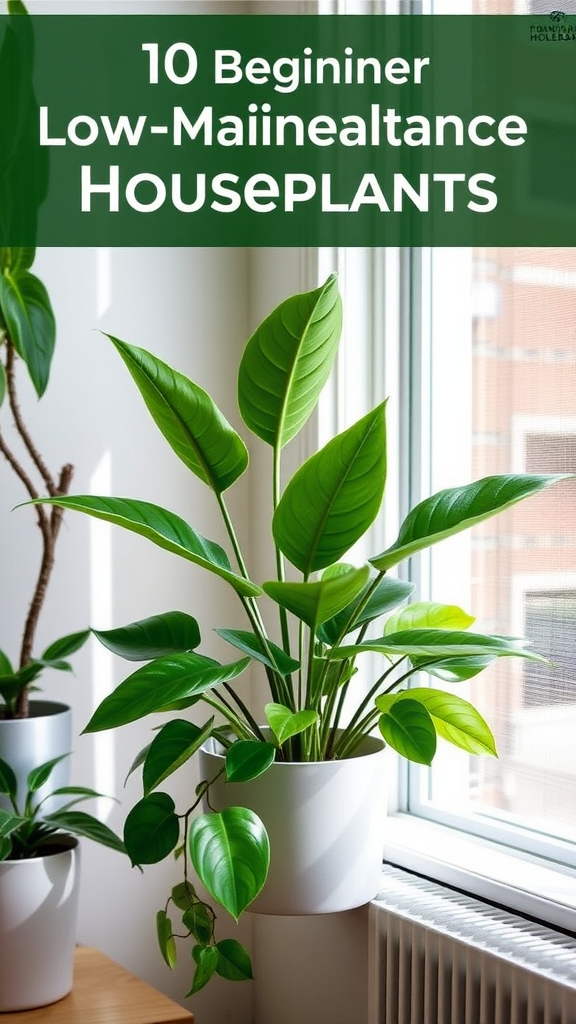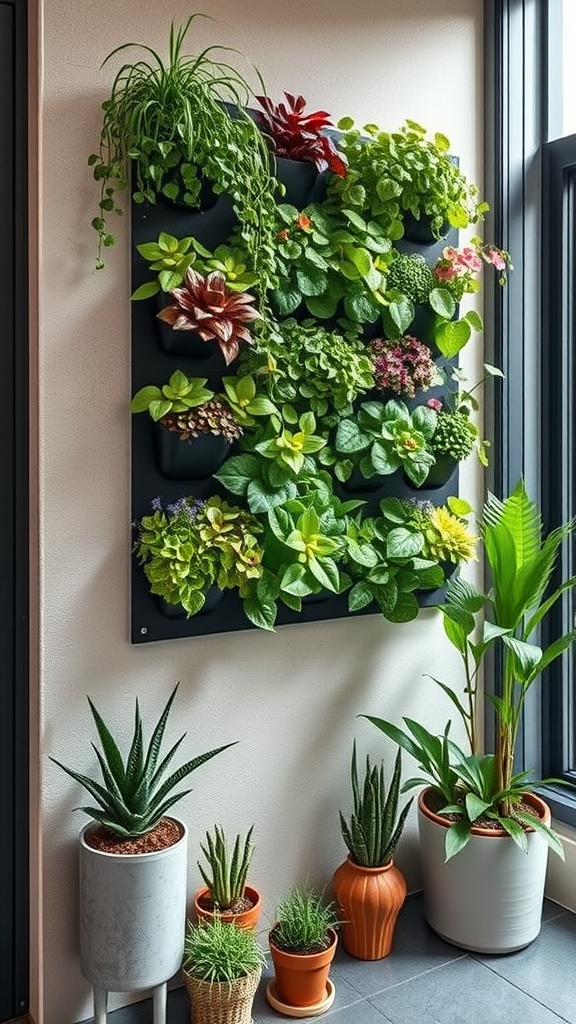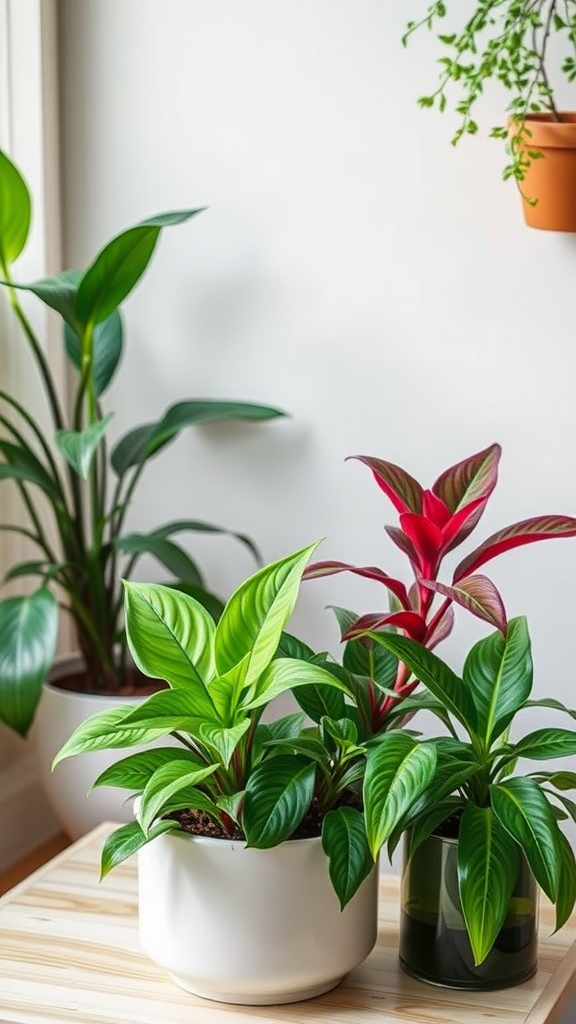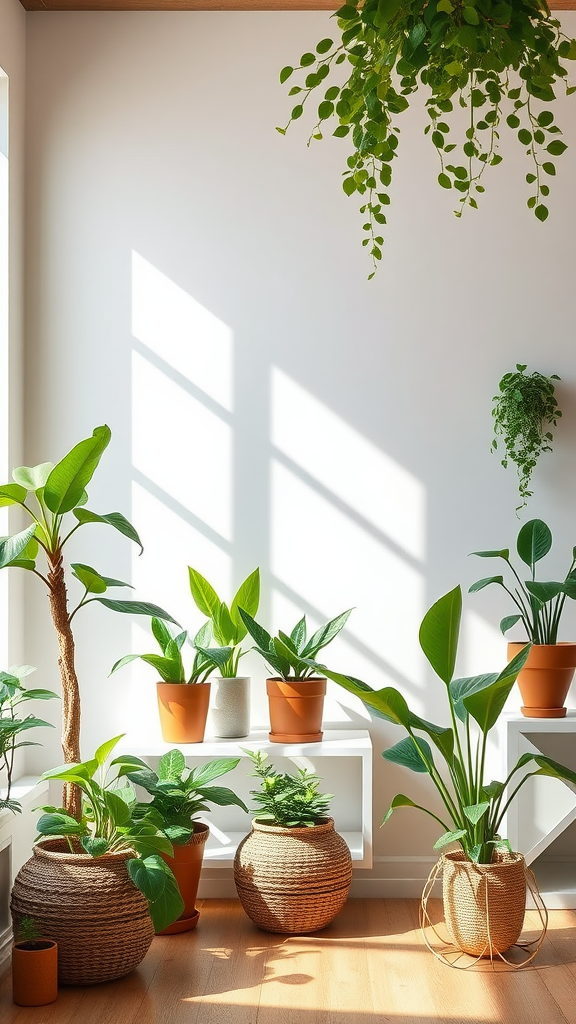Exploring the 10 Best Low-Maintenance Houseplants for Beginners
Are you excited to brighten up your home with some greenery but worried about the maintenance? You’re not alone! Many beginners are eager to add houseplants to their space without the fuss of complicated care. Thankfully, there are many low-maintenance options that are perfect for you. Here are ten of the best low-maintenance houseplants that will thrive with minimal effort.
1. Snake Plant
The snake plant, also known as Sansevieria, is one of the most popular houseplants. It has striking tall, sword-like leaves that can flourish in various lighting conditions, from low light to bright, indirect sunlight. Watering can be done once every few weeks, making it perfect for beginners.
2. Pothos
Pothos is another favorite due to its trailing vines and heart-shaped leaves. This plant does well in low light but loves to grow in bright, indirect light as well. It’s forgiving if you forget to water; just let the soil dry out before the next watering session. Plus, it can help purify the air, adding an extra bonus!
3. ZZ Plant
The ZZ plant is known for its glossy, dark green leaves and its ability to survive in low-light conditions. It’s resistant to pests and doesn’t need frequent watering. In fact, you can skip watering for weeks during the winter months! This makes ZZ the perfect option for anyone who might forget their watering schedule.
4. Spider Plant
Spider plants are charming and easy to care for. They produce small “baby” plants that hang off the main plant, making them visually appealing. They thrive in well-drained soil and need watering only when the top inch of soil is dry. They also do well in a variety of light conditions.
5. Peace Lily
Peace lilies are loved for their elegant white flowers and glossy leaves. This plant can tolerate low light but thrives in bright, indirect light. Watering is simple; just keep the soil moist but not soggy. They can also help filter out toxins from the air, enhancing your indoor environment.
6. Rubber Plant
Rubber plants are known for their thick, shiny leaves and can grow quite large, making a statement in any room. They prefer bright light but can survive in low light too. Watering should be done every week or two, allowing the top inch of soil to dry out between watering sessions.
7. Cast Iron Plant
The cast iron plant truly lives up to its name. It’s nearly indestructible and can handle neglect, low light, and a wide range of temperatures. Watering is infrequent, so you won’t need to worry about keeping a strict schedule. Its dark green leaves add a nice touch to any space, whether it’s your living room or office.
8. Snake Plant Robusta
Similar to the classic snake plant, the Snake Plant Robusta features broader, upright leaves. It thrives effortlessly in indirect sunlight and tolerates neglect very well. All it needs is occasional watering when the soil dries out, making it a go-to for busy beginners.
9. Dracaena Marginata
With its thin, arching leaves and tree-like structure, the Dracaena Marginata adds personality to your home. It flourishes in indirect light, and you’ll only need to water it when the topsoil is dry. Plus, this plant is known for purifying the air, making it a practical choice.
10. Chinese Evergreen
Chinese evergreens are versatile plants that come in various leaf patterns and colors. They thrive in low light and are quite forgiving when it comes to water. Water them when the soil starts getting dry, and they’ll reward you with lush foliage all year round.
As you can see, there’s a wide range of low-maintenance houseplants perfect for beginners. With these selections, you can easily incorporate some greenery into your home without the worry of constant care. Just remember to give them the right environment, choose the correct potting mix, and check on them occasionally. Your new plants will flourish and bring a refreshing, vibrant touch to your living space!
Tips for Creating an Ideal Environment for Easy-Care Plants
Creating a comfortable environment for easy-care plants is essential to ensure they thrive, especially if you are just starting with houseplants. These plants can bring life to your space and require minimal effort to maintain. Here are some practical tips to help you set up the ideal conditions for your low-maintenance plants.
Choose the Right Location
The first step to setting up the perfect environment is picking the right spot in your home. Most houseplants prefer indirect sunlight, so consider the following:
- Avoid Direct Sunlight: Direct sunlight can scorch leaves, especially for plants like peace lily and snake plant. Instead, opt for a bright room with filtered light.
- Temperature Control: Many easy-care plants thrive in temperatures between 60°F and 75°F (15°C to 24°C). Keep them away from extreme heat or cold, like radiators or drafty windows.
Soil Selection
Choosing the right soil can make a significant difference in how your plants grow. You should consider the following:
- Drainage is Key: Use well-draining potting soil. This helps prevent root rot, which is a common problem for many houseplants.
- Consider a Specialty Mix: Depending on the type of plant, you might want to use a specific soil mix—like cactus mix for succulents or orchid mix for orchids.
Watering Wisely
One of the most critical aspects of plant care is watering. Overwatering is a leading cause of death for houseplants. Here are some tips:
- Understand Your Plant’s Needs: Different plants have different water needs. Research how often to water each plant species you own.
- Check Soil Moisture: Before watering, stick your finger an inch or two into the soil. If it feels dry, it’s time to water. If it still feels moist, wait a few more days.
Humidity Levels
Humidity is essential for many houseplants, especially tropical varieties. Here’s how to create a suitable environment:
- Use a Humidifier: If your home tends to be dry, consider using a humidifier. This adds moisture to the air, benefiting plants like ferns and spider plants.
- Grouping Plants: Placing plants close together can create a microenvironment with higher humidity. As they release moisture, it can help sustain the needed humidity levels.
Fertilizing Techniques
While easy-care plants generally require less fertilizer, occasional feeding can support growth:
- Use Balanced Fertilizer: A balanced, water-soluble fertilizer can provide essential nutrients. Choose one specifically formulated for houseplants.
- Follow the Instructions: Always follow the fertilizer’s instructions regarding dilution and application to avoid over-fertilization.
Regular Maintenance
Even low-maintenance plants need occasional care. Keep your plants healthy with these simple steps:
- Dust the Leaves: Wipe leaves with a damp cloth regularly. Dust can block sunlight and hinder photosynthesis.
- Inspect for Pests: Check your plants for signs of pests, such as tiny webs or yellowing leaves. Early detection can prevent infestations.
Use Appropriate Pots
The pot you choose can significantly impact your plant’s health:
- Ensure Drainage Holes: Always opt for pots with drainage holes to avoid water pooling at the bottom.
- Consider Material: Terracotta pots are porous and allow the soil to breathe, while ceramic pots retain moisture longer. Choose based on your specific plant needs.
By carefully selecting the location, soil, watering practices, humidity levels, and pots, you can create a perfect environment for your low-maintenance houseplants. With a little effort, you can enjoy the beauty of plants without overwhelming care routines.
Conclusion
Choosing the right houseplants can transform your living space into a vibrant oasis without adding stress to your daily routine. The 10 best low-maintenance houseplants for beginners offer a perfect blend of beauty and simplicity, enabling you to enjoy the joys of plant parenthood even if you lack a green thumb. From resilient succulents to hardy pothos, these plants are not only appealing but also easy to care for, making them ideal companions for busy lifestyles.
Creating the right environment for these easy-care plants is key to their success. Ensure they have appropriate lighting, whether it’s bright, indirect light or a low-light setting. Selecting the right potting mix and understanding the watering needs of each plant will promote growth and vitality. Keep in mind that even low-maintenance plants thrive with a little attention; monitoring their health will allow you to catch any issues early.
With these simple tips and a focused selection of plants, you can cultivate a lush indoor garden that brings joy and tranquility into your home. Remember that gardening is a learning journey. Don’t hesitate to experiment with different plants and tweak their care as you gain confidence. Embrace the soothing ritual of caring for your greenery, and watch as your home flourishes with life and color. Your low-maintenance houseplants can be a delightful addition to your living space without overwhelming your schedule, making nature an integral part of your daily life.





